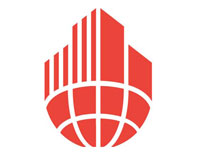The sale of Cushman & Wakefield by the Agnelli family may have been expected for some time, but it is the mooted sale price that has set tongues wagging. On the face of it, talk of a $2bn price tag appears far fetched and out of kilter with other areas of corporate activity. But there are precedents that could make it an exception.
The Agnellis, best known for their association with the Fiat Chrysler Automobiles group, paid $565m (£374m) for a 67.5% stake in C&W in late 2006 through their Exor family investment company. No small sum.
Since then Exor has injected more cash into the US-based company and took its stake to nearly 80% by the end of June 2014.
C&W has long been seen as a business, on this side of the pond at least, that has punched below its weight. The firm has begun to put that right in the past couple of years and, buoyed by strong markets in the US and in London, Exor clearly sees a window of opportunity to realise value from its investment.
In the UK, C&W’s improved performance in London can be traced back to the poaching of Digby Flower from CBRE ahead of MIPIM 2012. Installing him as head of London markets was a signal of intent. It also brought together its agency, investment and development functions under one leader, under one roof. Since then, of course, Flower has been elevated to run the UK business.
There have been other appointments since that have furthered the firm – and several important instructions too – though, like its rivals, it owes a debt of thanks to London and its position as the world city.
In 2012, C&W’s stated ambition was to double UK turnover by 2017, by increasing the “interplay” between London and New York. Prospective purchasers will look for evidence that that has happened.
But none of that was the trigger for the sale.
The trigger was the appointment of former Goldman Sachs banker Edward C Forst as chief executive in late 2013. Indeed, it was the conclusion of his review that prompted Exor to push ahead.
Since Forst’s appointment, performance at the group has improved dramatically and put it in a position where a $2bn price tag, though toppy, does at least warrant examination.
In 2013, C&W posted full-year EBITDA of $145m, a rise of 10% on the previous year. In the first half of 2014 the equivalent figure rose 158% to $38.1m. That sort of rate of growth makes the 38% rise in profits needed to take the bottom line to £200m appear achievable.
And it is that benchmark that could make $2bn achievable. After all, GVA was sold to Billinger for £150m in 2014 – 10 times EBITDA.
But that sort of multiple is the exception, not the rule.
According to S&P Capital’s data, the majority (60%) of leveraged buy-outs in 2014 were at below six times EBITDA.
Whatever the sale price, what it is that would appeal to a prospective buyer?
One area of activity that will be seen as attractive is the corporate occupier and investor services division.
By the end of the first half of 2014 the business was managing more than 1.2bn sq ft of property and had increased revenues by nearly 50% on the previous year, the strongest growth of any division.
In 2014, more typical services, such as facilities management, were joined by the risk management solutions business. This business, headed by former New York police commissioner Raymond Kelly seeks to emulate security specialists like Kroll in a real estate context. This means that clients can now go to just one provider to not only manage their electricity supply but also help prevent a terrorist attack.
In capital markets, according to the half-year figures, fee revenues grew 20% year-on-year to the end of June 2014. Its non-performing loans advisory work stood out. Recently it backed up its transaction knowledge by winning the mandate to advise on the €8.5bn (£6bn) Nama Project Arrow portfolio.
There will be a long list of interested parties looking to run the rule over C&W’s books. And Exor then has good reason to see this as a good time to get out of what had once been an underperfoming asset. Whether it is likely to see $2bn out of the deal remains a bigger question.
Chief executive:
Edward C Forst
EBITDA H1 2014: $36.8m
EMEA revenue: $192.5m
+ 28% yoy
Largest division revenue: Leasing – $396.2m
H1 costs: $884m +21% yoy
Company history:
Formed in New York in 1917 by J Clydesdale Cushman and Bernard Wakefield, the company provided real estate services throughout the state until the 1960s when it began to expand across the US. At one time the company was owned by media company RCA before becoming part of Mitsubishi. C&W established a presence in Europe with the takeover of Healy & Baker in 1990 and expanded across the globe through strategic partnerships and takeovers. After 16 years of expansion, in late 2006 the Agnelli family bought a controlling stake in the company through its investment vehicle Exor.











